Finishing
Finishing Solutions: Your Guide to Achieving Perfect Surfaces
In metal fabrication and manufacturing, finishing is more than just the final step—it’s an essential process that guarantees the surface of your product meets the highest standards of quality, durability, and visual appeal. Finishing involves refining the surface of a material to remove imperfections, improve texture, and enhance functionality.
While finishing enhances aesthetics and ensures the end product looks as good as it performs, it can also make or break the quality of your final product. Finishing plays a critical role in product performance and can improve wear resistance, as well as establish a seamless fit between components. The proper finish increases product longevity and customer satisfaction and provides a competitive edge in today's markets.
At Weiler Abrasives, we understand the challenges manufacturers face in achieving consistent and efficient finishing results. We're committed to providing innovative, high-quality finishing solutions tailored to your industry's needs. Our range of abrasives and brushes and our team's expertise equip you to achieve perfect surfaces while maximizing productivity and minimizing downtime. Learn more about superior finishing solutions that enhance your product’s quality and lifetime.
The Fundamentals of Finishing
What Is Finishing?
Finishing is the process of improving a material’s surface to meet specific functional or aesthetic requirements. Finishing applications include blending welds, polishing surfaces to a high gloss, and preparing parts for subsequent treatments such as painting or coating. Each of these tasks demands precise control over tools, techniques, and materials to achieve the desired result.
Finishing serves diverse purposes and industries and can mitigate corrosion or reduce friction to achieve a polished aesthetic. For instance, stainless steel appliances often require a uniform directional finish for visual consistency, while aerospace components necessitate precise measured finishes to meet strict functional standards.
Types of Finishes
Visual Finishes
Visual finishes are subjective and evaluated by appearance. These finishes prioritize the consistency of the surface's look rather than its precise texture. For instance, a directional finish on a refrigerator door is often assessed by how uniform the pattern appears to the naked eye. Common visual finishes include:
- Mill Finish: The unprocessed surface straight from the production mill, typically seen on carbon or cold-rolled steel. Applying abrasives to this surface creates scratches or swirling patterns, which can alter its original appearance.
- Directional Finish: Found on stainless steel products, these finishes include hairline (fine, light markings) and #4 finishes (coarser striations).
- Nondirectional Finish: Achieved using high-grit sanding discs and orbital sanders to create a consistent, pattern-free appearance.
- Mirror-Polish Finish: This highly reflective and flawless finish is often labor-intensive and requires precise grinding and polishing steps.
Visual finishes are commonly used in applications where surface appearance is a critical factor but precise measurements aren’t necessary, such as with appliances or decorative components.
Measured Finishes
Measured finishes are objective and quantified by metrics such as Ra (roughness average) or RMS (root mean square). Crucial for applications requiring low friction or high precision, these metrics provide detailed information about the peaks and valleys on the surface. Tools like profilometers measure surface roughness by moving a diamond stylus across the surface to calculate the average deviations.
In contrast to visual finishes, measured finishes are often required in applications where parts come into direct contact, such as seals or bearings, or where coatings and treatments depend on specific surface characteristics. Measured finishes are also especially important in industries like food processing and aerospace, where stringent quality standards must be met. A precise measured finish ensures compatibility and functionality in demanding environments.
Common Materials for Finishing
Various metals can undergo finishing processes, with the most common being:
- Stainless Steel: Frequently used in industries like food and beverage, pharmaceuticals, and architecture due to its corrosion resistance and aesthetic appeal. Finishing techniques ensure uniformity and durability.
- Aluminum: Lightweight and versatile, aluminum is often finished to enhance its appearance and protect it from oxidation. Techniques like anodizing or clear coating are popular.
- Carbon Steel: Requires protective finishing to prevent rust and wear, such as painting or powder coating.
Other metals, including titanium and copper, may also undergo finishing processes tailored to their specific properties and intended applications.
Challenges in Finishing Operations
Finishing operations play a critical role in improving the aesthetic and functional qualities of manufactured components, yet achieving optimal results is not without its challenges. Manufacturers and fabricators often encounter the following pain points during finishing operations:
1. Achieving Consistent Finishes on Complex Surfaces- Irregular or intricate geometries can make it difficult to maintain a uniform finish across all areas of a workpiece.
- Variations in material hardness or coatings may lead to inconsistent results, requiring additional time and effort to rectify.
2. Balancing Speed with Precision
- The need to maximize throughput often conflicts with the demand for high-quality finishes, especially on high-value parts.
- Overly aggressive finishing processes can compromise surface quality, while slower methods may lead to production bottlenecks.
3. Disc Wear During Repetitive Use
- Repeated use of finishing discs on hard materials accelerates wear, reducing efficiency and driving up operational costs.
- Discs losing their edge or shape can compromise both the quality and consistency of the finish.
4. Meeting Specific Aesthetic and Functional Requirements
- Customers increasingly demand finishes tailored to precise functional or aesthetic standards, such as reflectivity, smoothness, or resistance to corrosion.
- Tight specifications often require advanced finishing techniques, equipment, and abrasives to meet expectations without sacrificing productivity.
Weiler Abrasives provides innovative solutions designed to deliver consistent, high-quality finishes while enhancing efficiency and extending disc life. Our range of high-performance finishing products is tailored to address the complexities of your modern manufacturing needs.
Choosing the Right Finishing Discs
Understanding the requirements of your specific application is key to selecting finishing discs. Factors such as desired surface quality, material type, and tool compatibility with your processes all play a critical role in achieving optimal results. We’ll explore some key considerations and best practices for choosing the correct discs for your finishing operation.
Key Considerations
1. Desired Finish QualityThe desired surface finish—whether polished, blended, or a mirror finish—determines the tools and abrasives required. For instance:
- Rough Grinding: A 36- or 40-grit flap disc is ideal for material removal and weld leveling.
- Smooth Finishes: Progressively finer grits, such as 60, 80, or 120, are essential for achieving a smooth finish.
- Mirror Polish: For a reflective, polished surface, high-grit abrasives combined with buffing compounds or fiber wheels are needed.
Different materials, such as stainless steel or carbon steel, require specific abrasives for efficiency and avoiding damage.
- For stainless steel, products designed for this material can enhance cutting speed, durability, and heat resistance.
- For surfaces with heavy mill scale, coarser grit abrasives will remove it faster but may require additional steps to smooth the surface.
3. Tool Compatibility
Consider whether the discs will be used in manual or automated systems. The compatibility of abrasives with the tool type ensures consistent performance and safety.
4. Avoiding Cross-Contamination
Cross-contamination can compromise the quality and durability of stainless steel finishes. Use Inox-labeled abrasives to guarantee they are contaminant-free (less than 0.1% iron, sulfur, or chlorine). Additionally, never use a disc on stainless steel if it has previously been used on carbon steel. Color-coded wire brushes can help operators avoid this mistake.
Abrasive Finishing Disc Overview
Abrasive finishing discs are essential for achieving specific surface profiles and finishes on various materials. These versatile discs cater to different stages of the finishing process, from aggressive material removal to smooth, polished surfaces. Below is an overview of common abrasive finishing discs and their applications:
Flap Discs and Mini Flap Discs
Flap discs are ideal for pure stock removal and consistent surface profiles. For reaching into tight areas, mini flap discs offer precision and versatility. These discs are available in a range of grain sizes, allowing operators to achieve smoother finishes by stepping down to finer grits, such as from 36 to 80 or 120.
While flap discs are highly effective at material removal, they generally do not produce a visual finish. Workpieces finished with a flap disc often require additional surface treatment or are used in applications where the final finish is not critical. Flap discs are available in ceramic and zirconia alumina grains, with ceramic options often featuring a topcoat. The topcoat is particularly beneficial for heat-sensitive applications. It reduces heat generation, preventing discoloration and rough finishes on materials like stainless steel.
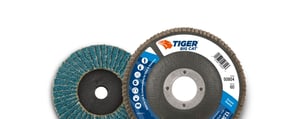
Resin Fiber Discs
Resin fiber discs are another popular choice for blending and smoothing surfaces. Skilled operators can use these discs to blend welds and even create specific surface patterns. For applications requiring extremely smooth finishes, high-grit resin fiber discs can be paired with an orbital sander. Adding compounds or employing wet polishing techniques can further enhance the results. Like flap discs, the finish achieved with resin fiber discs depends on the chosen grit size, with finer grits yielding smoother surfaces.
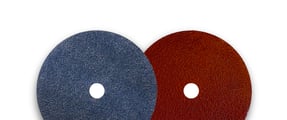
Nonwoven Abrasives
Nonwoven abrasives are ideal for creating a consistent, cohesive finish on metal surfaces. Available in various forms, including as hand pads, unitized wheels, clean and strip discs, and surface conditioning discs, they effectively remove discoloration and produce desired surface textures. These abrasives are offered in grades ranging from coarse to very fine, enabling a step-by-step refinement process:Coarse grades remove surface imperfections and prepare the material for further refinement.
Medium grades smooth the surface, leaving a bright, satin finish.
Very fine grades create a glossy, silky finish for high-precision applications.
Wire Brushes
Wire brushes are excellent for applications where material removal is not desired. They are particularly effective at refining existing finishes and removing heat discoloration on stainless steel. The diameter of the wire determines the fineness of the scratch pattern, making these brushes suitable for improving visual finishes. Wire brushes, however, cannot remove scratches left by more aggressive abrasives, such as flap discs. They are best used for light finishing and edge blending tasks.
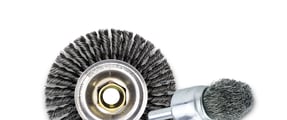
Nylon Abrasives and Mechanized Buffing
Nylon abrasive products provide additional finishing options, capable of removing burrs, radiusing edges, and enhancing surface finishes.
For applications requiring a fine, measured finish—such as commercial and retail appliance workpieces—mechanized buffing and polishing systems may be necessary. These systems are often used for repetitive tasks in industrial manufacturing but can also be applied to achieve high-quality finishes using bench grinders, right-angle grinders, or other hand tools.
View All Nylon Abrasive Brushes
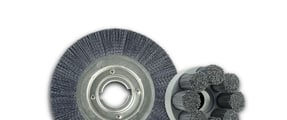
Best Practices for Superior Finishing
Achieving a high-quality finish requires a combination of safety-conscious procedures and efficient techniques. These best practices ensure both safety and optimal results, particularly when working with stainless steel, which demands precision and care to prevent damage.
Safety First
Prioritize safety at every step of the finishing process to protect workers and maintain a productive environment:
- Use Appropriate Personal Protective Equipment (PPE): Always wear gloves, safety glasses, and respirators when working with abrasives. When finishing stainless steel, a respirator is critical to protect against airborne particulates, including nickel, which can pose health risks.
- Inspect and Handle Tools Properly: Before use, regularly check polishing and grinding machines for wear or damage. Handle tools with care to avoid accidents and maintain consistent performance.
- Follow Safe Operating Procedures: Operate polishing and grinding machines according to manufacturer guidelines. Make sure safety guards are in place, and maintain a clean workspace to reduce hazards.
Learn more about how our S.P.O.T. Safety Program can help your team prevent work-related injuries and increase workforce efficiency.
Efficiency Tips
To increase productivity and achieve superior results, implement these efficiency-focused techniques:
- Match Abrasives to the Task: Select abrasives designed for specific finishing applications. For example, choose contaminant-free abrasives for stainless steel to avoid oxidation and achieve a flawless finish.
- Avoid Cross-Contamination: To prevent contamination, use separate tools and abrasives for stainless steel and carbon steel. Abrasives labeled as contaminant-free contain less than 0.1% iron, sulfur, and chlorine—elements that can cause oxidation and compromise the finish. Use stainless steel wire brushes on aluminum and stainless steel workpieces.
- Reduce Disc Wear with Proper Usage: Avoid applying excessive pressure, which generates heat and can damage materials, especially stainless steel. Let the abrasive do the work as designed to reduce the risk of overheating and prolong disc life.
- Optimize Workflow for Faster Turnaround: When possible, begin with a prefinished base material. For example, starting with a No. 4 directional finish or a mirror polish minimizes manual finishing requirements after assembly.
- Control Heat and Movement: Heat buildup can harm the base metal and increase rework time. Use a uniform and consistent pattern when finishing, and keep the disc moving to avoid dwelling in one area too long.
Industries and Applications for Finishing
Finishing is a critical step in many industrial processes, as components must meet functional, aesthetic, and safety standards. Below are some of the industries that rely on finishing processes, along with specific applications for each:
- Metal Fabrication and Pipeline:
Metal fabrication and pipeline industries depend heavily on finishing processes to achieve smooth, polished surfaces free of burrs and imperfections. Common finishing applications include surface polishing to enhance appearance and corrosion resistance, deburring to remove sharp edges created during cutting or welding, and pipeline weld cleanup to ensure structural integrity and prevent corrosion. - Automotive and Aerospace:
In the automotive and aerospace sectors, finishing maximizes the performance, precision, and durability of parts. Precision polishing is often used for engine components, turbine blades, and airframe parts to improve performance and reduce wear. Paint preparation is another critical step that smoothes surfaces and prepares them for priming and painting. Additionally, deburring and edge rounding help gears and brackets maintain functionality and safety. - MRO (Maintenance, Repair, and Operations):
MRO operations across industries rely on finishing to extend equipment life and restore parts to operational standards. Surface refinishing helps restore worn or corroded parts, such as shafts and bearings, while corrosion removal eliminates rust and oxidation from machinery and equipment. Texture matching is also important in aligning repaired parts with original surface textures. - Construction:
Finishing is essential for both structural integrity and aesthetic appeal in the construction industry. Concrete surface preparation optimizes smooth surfaces for coatings or overlays, while metal structural finishing involves cleaning and polishing steel beams, railings, and brackets. Weld cleanup is also vital for smoothing and refining weld joints on construction equipment and infrastructure. - Energy and Power Generation:
The energy sector requires precise finishing to maximize the performance and longevity of critical components. Turbine blade polishing enhances efficiency and reduces wear in wind and steam turbines. Pipe and tube finishing removes weld marks and creates smooth surfaces for fluid flow. Surface preparation for coatings represents another key application, and it prepares surfaces for heat-resistant or anti-corrosion treatments. - Shipbuilding and Marine:
Shipbuilding and marine industries use finishing to maintain the safety, efficiency, and longevity of vessels and components. Hull surface preparation smooths and cleans hulls before applying anti-fouling coatings, while propeller polishing maximizes hydrodynamic performance. Corrosion removal addresses rust and marine growth on ship structures and components and optimizes durability. - Railway Maintenance:
Railway maintenance leverages finishing processes to keep trains and tracks in safe, reliable condition. Wheel refinishing restores worn train wheels for enhanced performance, while track surface smoothing prepares rail tracks for safe, efficient operation. Deburring and edge cleanup smooth sharp edges on rail components to prevent accidents. - Food and Pharmaceutical:
In the food and pharmaceutical industries, finishing ensures compliance with stringent hygiene and safety standards. Sanitary polishing creates smooth, non-porous surfaces on equipment to prevent contamination. Surface refinement makes sure equipment is easy to clean and sterilize, while corrosion resistance treatments protect equipment used in chemical or high-moisture environments.
Why Weiler for Finishing Solutions?
Innovation Driving Performance
Combining product innovation with operational problem-solving, Weiler takes a holistic approach to improvement. The Weiler Consumable Productivity (WCP) program exemplifies this philosophy by delivering expert guidance to refine finishing processes, lower expenses, and deliver remarkable results. This comprehensive support system is designed to drive efficiency at every workflow stage.
Quality That Delivers Results
Precision and reliability are at the core of Weiler’s manufacturing approach, with advanced processes and thorough testing ensuring top-tier standards. Abrasive products are carefully inspected for superior safety and performance, so customers can streamline their operations and achieve reliable results. Weiler’s unwavering attention to detail reinforces our reputation as a trusted industry partner.
Technical Support: Expertise When You Need It
Technical support from Weiler addresses more than product selection, with an emphasis on application-specific advice. On-site process optimization services improve finishing operation efficiency, delivering enhanced performance and value. Expert-led operator training fosters mastery of effective techniques and adherence to rigorous safety standards. Comprehensive documentation support ensures that teams across all shifts operate seamlessly and consistently.
- New innovations help you meet environmental standards and sustainability expectations
- World-class research, development, and manufacturing capabilities keep your business ahead of the competition
- Proprietary technologies and global access to abrasive cutting wheels provide flexibility and freedom to develop limitless solutions
- Stable supply and local inventory to keep your business running smoothly and reduce your inventory burden
- On-site technical support and education to keep your cutting process optimized and your people safe
- Engineered solutions tailored to your specific applications
Our Customers Experience Unparalleled Results
“I just don’t want to be a gear supplier. I want to be a partner. And I think Weiler has done a good job of doing that with Rave.”
Duis aute irure dolor in reprehenderit in voluptate velit esse cillum dolore eu fugiat nulla pariatur. Reprehenderit in voluptate velit esse cillum dolore eu fugiat nulla pariatur.
Duis aute irure dolor in reprehenderit in voluptate velit esse cillum dolore eu fugiat nulla pariatur. Reprehenderit in voluptate velit esse cillum dolore eu fugiat nulla pariatur.
Related Resources
Weiler Abrasives offers a wealth of resources to support your cutting operations.
Explore how a foundry cut abrasive spend by over 40% with the high-performance Tiger Grinding Wheels from Weiler Abrasives.
Discover how Weiler Abrasives helped a shipbuilder save over $20,000 annually while meeting back-gouge weld contract requirements.
Learn how switching to Tiger Ceramic enabled a company to cut abrasive costs by $18,937 per year and achieve superior performance.
Finishing Resources
Weiler Abrasives offers a wealth of resources to support your finishing operations.
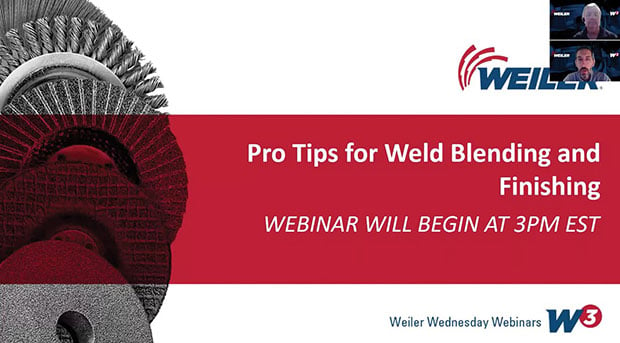
Webinar
Tune into this webinar to unlock professional techniques for weld blending and finishing success.
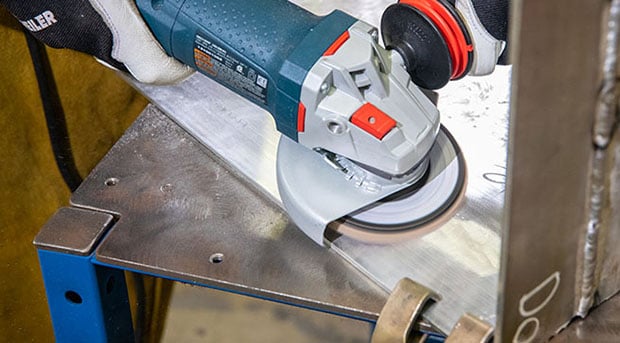
Guide
Discover how Weiler Abrasives tackles aluminum's unique challenges with advanced solutions designed for durability, speed, and cost savings
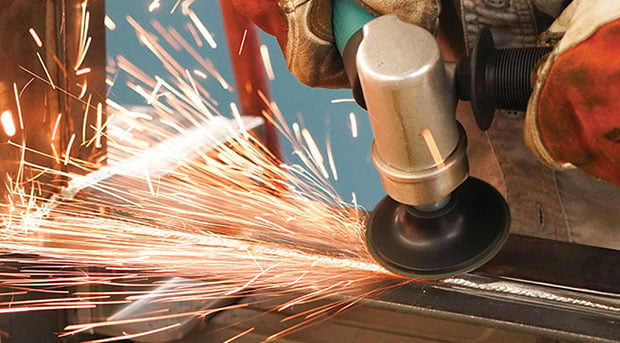
Flyer
Learn how the Tiger Blending Discs improve efficiency, reduce abrasive consumption, and adapt to hard-to-reach grinding and blending tasks.
